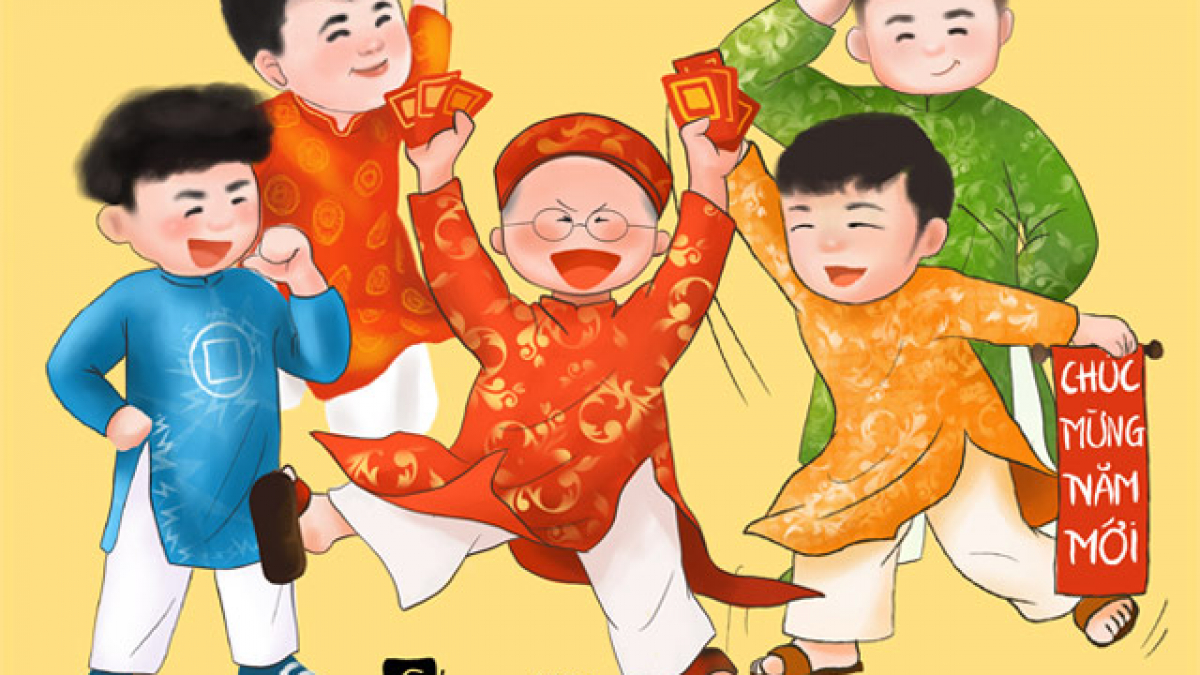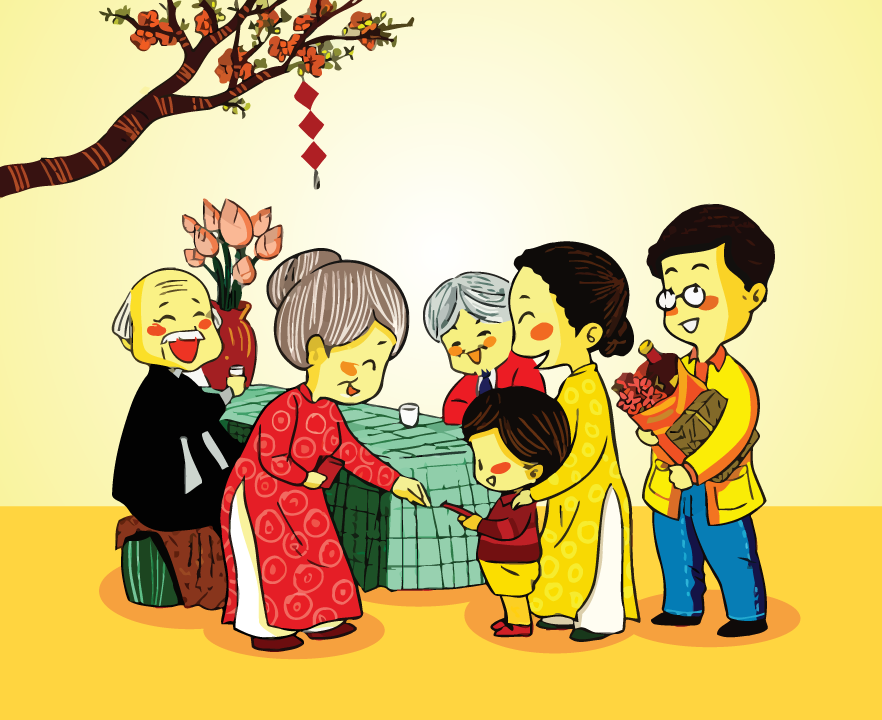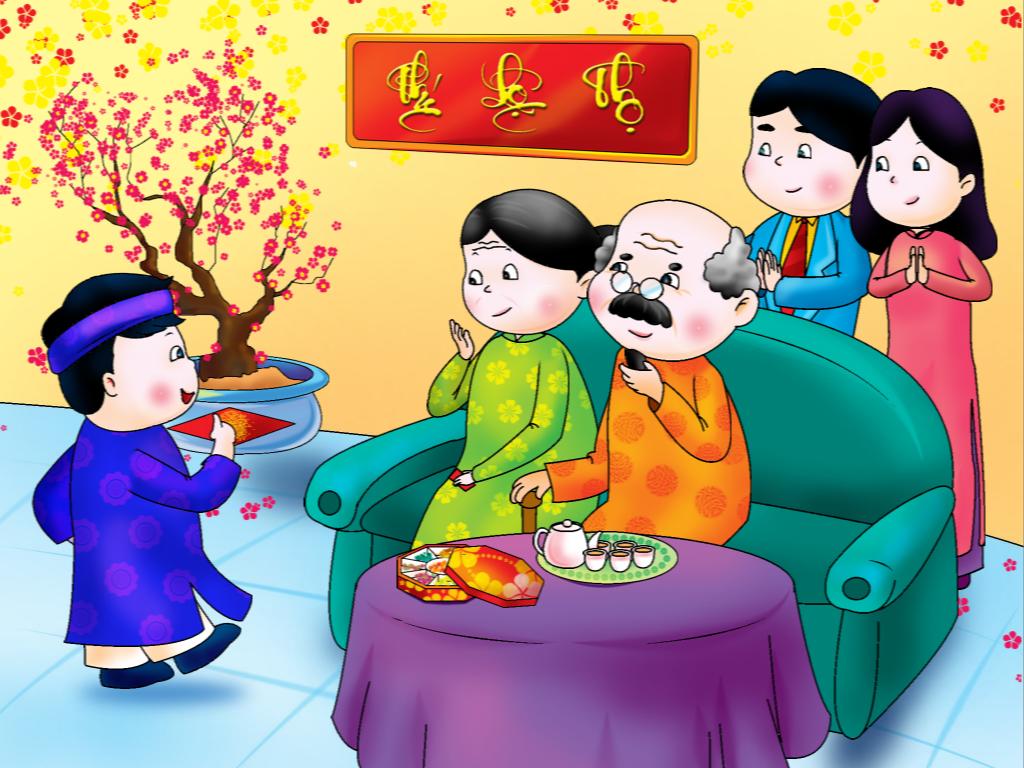Vietnamese Lunar New Year with Catholics
1. WHAT IS LUNAR NEW YEAR OF VIETNAMESE PEOPLE?
Lunar New Year is the first and most important festival in the Vietnamese festival system, it is deeply bold and unique culture reflecting the harmony between human and nature in the cycle of operation. of the universe.
The “Nguyen” means the beginning, the “Đán” means the morning, the beginning of the new year. At the same time, Tet is also a chance for families, relatives, neighbors, relatives close to reunite, wish each other and remember, grateful ancestors.

From ancient to present, the Vietnamese still have the concept of “1st lunar new year for father, 2nd lunar new year for mother, 3rd lunar new year for teachers”. Still, retain that beautiful customs, Catholics also add to the memory and pray for the ancestors’ soul in the early days of the year.
2. THE DIFFERENCE IN THE LUNAR NEW YEAR TRADITIONS OF CATHOLICS
a. Welcoming the new year by the early morning ceremony
There is no tradition of parishioners to welcome the new year but in a very private way – At around 4 am- 5 am on the first day of the Lunar New Year, all Catholics get up very early and go the church to attend the first ceremony of the New Year.

The euphoria of welcoming New Year’s Eve adds to the excitement of the early part of the year and make everyone to come to church in a mood filled with joy. In this early morning ceremony, they expect for the greatest things happened in the coming year.
b. An occassion to offer prayers to ancestors’ soul and bless the good things for others
In addition to the meaning of offering to God, the early celebration of the first lunar new year is also a chance for all the children to offer prayers for ancestors’ soul soon to return to heaven.
Tet celebrates the start of a whole year with new opportunities, challenges and operations. In the new year, people say good words and wish each other a new year of peace and happiness and success. Vietnamese people think with a favorable start, the New Year will be more comfortable. Therefore, the celebration of the first lunar new year is one of the most meaningful ceremonies in Christian life.
c. Picking the lucky word on New Year

“Lộc” here is the good word of God. The parishioners will bring this “Lộc” to place in the solemn position in the home. It is considered as the Lord’s teachings on how to live in the new year.
d. Days to remember the Dead
Instead of visiting the tomb of the ancestors in the New Year, Catholics have a separate holiday to remember the dead. The day named “Nhận Tiên Nhân” usually occurs on the 3rd or 4th Lunar New Year. On this day, all family members gather in the Holy Land to repair or clean the graves for their parents. Then, the parishioners send prayers for their ancestors’ soul soon be forgiven for the sins committed on earth then they can soon return to Heaven.
e. God blesses for newlywed couple
According to Catholic belief, the two who go to marriage are God’s will and are blessed. In the mind of Catholics, marriage is God’s union so these two will forever be married and their marriage is sustainable. The newlyweds always receive the most blessings. Their New Year will be called “New Tet”.
In “New Tet”, both husband and wife will bring together “Lộc” to wish New Year the elders and relatives in the family. The present is simply a green cake and a bottle of wine, objects that show the fruits of labor. New Year’s greetings will receive the wedding ceremony of the couple, but then they will return to the bride and groom. At the same time, the new couple will be happy age. The money here is not important for much or little but it has special meaning: expecting the couple has the capital to build their own home.
Although welcoming Tet in very specific and special ways, the Tet festival of Catholics has much spiritual significance. Tet is not only a time for people to rest, meet, bless each other in the new year. Tet is also a time for Catholics to express their piety to their ancestors, as newlyweds realize that their marriage is important and meaningful. This is also the beautiful features contribute to the uniqueness of national culture.
Let’s read more our articles here.






